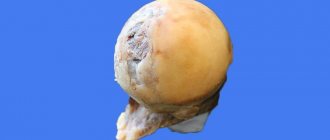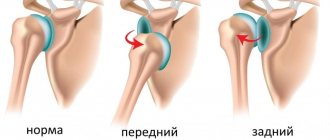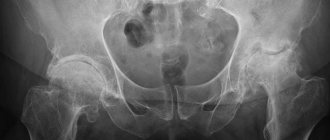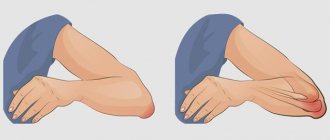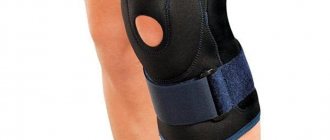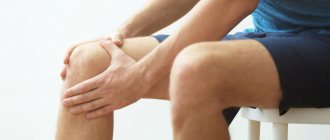Plexitis, or plexopathy, is an inflammation of a bundle of spinal nerves caused by a number of reasons. Brachial plexitis is an inflammatory disease of the brachial plexus, sometimes affecting the cervical plexus due to its proximity. Plexitis of the shoulder joint is diagnosed in patients of all age groups. If left untreated, it can lead to complete immobilization of the shoulder joint and the entire arm.
Types and causes of plexitis
Plexopathy can affect the cervical, shoulder and lumbosacral regions. Separately, solaritis is isolated - damage to the solar plexus.
Most often, the disease plexitis occurs as a result of injuries - severe bruises, dislocations, fractures, stab wounds, gunshot wounds and incised wounds.
Post-traumatic plexitis is sometimes found in neonatology, for example, obstetric paralysis.
In all the described cases, the mechanism of development of the pathology is due to damage to the branches of the nerve plexus (partial or complete rupture of their fibers) or compression of the nerve trunks.
Methods complementary to drug treatment
After the acute inflammatory process has passed, you can use massage, in combination with physiotherapy: electrophoresis, ultrasound, ozokerite, magnetic therapy. Constant therapeutic exercises will help consolidate the results. Balneotherapy, reflexology, laser therapy, cryotherapy will help stimulate nervous activity and relax muscles where necessary.
If pharmacological drugs in combination with additional treatment measures do not produce the desired results, surgical treatment methods will have to be used. In such cases, a neurosurgical operation will be performed, which helps restore the integrity of the nerve chain or relieve pressure on the nervous system.
Home remedies
For example, the use of traditional methods of treatment is allowed for shoulder plexopathy, but after consultation with the doctor and as an additional measure to the main therapy. The following are considered effective means at hand:
Ointments using propolis. You need to melt 15 g of animal fat in a water bath, then add 1 g of propolis. Stir until smooth and leave to cool. Use for external use with massage in the sore area 2-3 times a day; Bath with mint. Pour 1 liter into a kettle, then add 5-7 tablespoons of mint leaves, leave for 3 minutes, then pour into a warm bath. Take a bath for up to 30 minutes.
Risk factors:
- hypothermia;
- enlarged lymph nodes or tumor formation near nerve clusters;
- scoliosis (pathological curvature of the spine);
- congenital pathologies of the spine;
- metabolic disorders (for example, diabetes);
- autoimmune diseases;
- infectious diseases.
In rare cases, lumbosacral plexitis occurs as a result of venous thrombophlebitis or inflammatory diseases of the pelvic organs, such as prostatitis, cystitis, adnexitis, etc.
How does plexopathy manifest itself in symptoms in adults?
There are several types of plexopathy due to the nature of the lesion in a certain area of the nerve plexuses. Let's consider the types of disease:
- traumatic;
- compression due to neoplasms: tumors, hernias, protrusions, etc.
Examples:
- Plexopathy in the sacrum and lumbar region often occurs against the background of decreased function processes in the intervertebral discs due to hernias or protrusions.
- Neck plexopathy affects the nerve plexuses near the back of the skull that control a group of muscles.
- Brachial plexus plexopathy is common due to the position of the nerve ganglion - which is located in a place where there is a high risk of injury. In patients who consult a doctor, brachial plexopathy is diagnosed as post-traumatic.
Symptoms of plexitis
There are two stages during the course of the disease.
- The first is neuralgic. Caused by pain (plexalgia) in the nerve plexus, but radiating to surrounding organs. It often occurs suddenly and intensifies with pressure and movement. Some patients complain of minor sensory disturbances.
- The next stage is paralytic. It is characterized by decreased muscle tone and paralysis. Some tendon reflexes disappear. In areas adjacent to the affected plexus, trophic disorders occur - the skin turns pale, sweating disappears or increases.
The main symptoms of different types of plexitis:
- Cervical – manifested by pain in the lateral region of the neck, radiating to the back of the head and ear area. Sometimes spastic torticollis occurs. Hiccups may occur due to nerve irritation. The suboccipital muscles atrophy.
- Shoulder - pain in the arm, flaccid paresis, atrophy of the muscles of the shoulder and arm. The mobility of the elbow joint is limited. Shoulder dislocations are possible.
- Lumbosacral – pain in the anterior thigh, sacrum and buttocks. It is difficult for the patient to bend and straighten the leg at the hip, which causes gait disturbances and difficulty walking. The sensitivity of the gluteal region and the knee reflex disappear, and contracture develops. Erectile dysfunction, urination and defecation disorders are possible.
What is brachial plexus plexitis?
According to localization, plexopathy can be right- or left-sided, and bilateral plexitis is also common.
Plexite owes its appearance to the influence of internal and external factors, depending on which it is divided into the following types:
- Traumatic, caused by damage to the brachial neurovascular bundle during fractures, dislocations, and sprains of the shoulder joint. This same form includes plexitis received by a newborn during a complicated passage through the birth canal during a pathological birth. Plexitis resulting from exposure to occupational provoking factors is also considered traumatic.
- Infectious, when the nerve fiber is affected by toxins of infections - tuberculosis, herpes viruses, influenza, cytomegaloviruses.
- Infectious-allergic, appearing as a result of a reaction to the administered vaccine.
- Toxic. This type of brachial plexus pathology occurs due to poisoning with alcohol substitutes, mercury salts and heavy metals.
- Dysmetabolic, accompanying endocrine disorders - diabetes, gout, thyroid diseases.
- Compression-ischemic, the mechanism of which is compression of the neurovascular bundle due to the shoulder being in a long non-physiological position - with illiterate immobilization of the injured arm, in a narcotic state after surgical treatment, with the use of incorrectly selected crutches. Nerves can also be compressed by tumors of the joint and periarticular area, enlarged lymph nodes, or hematoma after injury. Poor posture can also be a cause of this form of brachial plexitis.
In addition to the above, plexitis of the shoulder joint can also be caused by osteochondrosis of the cervical and thoracic segments of the spine, when deformed vertebral bodies compress the roots of the spinal nerves; aneurysms of arteries in the shoulder area, frequent and prolonged hypothermia, costoclavicular syndrome (when additional cervical ribs are formed), hyperabduction syndrome (when the shoulder joint is sharply abducted, the nerve bundle is pinched).
Plexitis disease: treatment
Treatment methods depend on the stage and nature of the disease.
If plexopathy occurs after an injury, surgical intervention is required, the purpose of which is to eliminate the cause of compression of the nerve trunks. If the disease is infectious, the use of antibiotics is required.
For any type of plexitis, drug treatment is carried out to improve neuromuscular transmission and metabolic processes in muscle tissue and neuromuscular synapses. For this purpose, Neostigmine, Galantamine, angiotensin-converting enzyme are used. B vitamins are recommended for patients because they have neurometabolic effects.
To eliminate inflammation and pain, anti-inflammatory drugs are prescribed (Diclofenac, Ketorolac, Meloxicam, Ibuprofen). In cases of severe pain, therapeutic blockades are performed.
To improve microcirculation in the affected muscles and plexus tissues, vascular drugs are used, for example, xanthinol nicotinate or pentoxifylline.
Physiotherapeutic procedures have a good effect: massages, phonophoresis, electrophoresis, UHF, acupuncture, radon and hydrogen sulfide baths, ozokerite therapy, mud therapy, amplipulse therapy, etc.
Diagnostics
Many adult injuries will not recover on their own, and early evaluation by physicians who are experienced in treating these problems is important. Some injuries can heal over time or with quality therapy. Recovery time may be weeks or months. When the situation is unlikely to improve, several surgical techniques can be used to improve recovery.
To decide which injuries are most likely to resolve on their own, your doctor will rely on several exams of your arm and shoulder to check muscle strength and feeling in different areas. Additional tests such as MRI scans or CT/myelography may be used. A nerve conduction study/electromyogram, a test that measures electrical activity transmitted by nerves and muscles, may also be performed.
In some cases where nerve repair does not occur, tendon transfer surgery may be performed.
Consequences of plexitis
Even with proper treatment, incomplete recovery is possible. Sometimes irreversible persistent paresis, joint contractures, and muscle atrophy remain.
Without treatment, the prognosis is poor; plexopathy can cause serious complications:
- thinning of muscle fibers and a decrease in their total volume;
- loss of sensitivity in the affected part of the body;
- paresis in the limbs.
There are known cases of paralysis of the affected part of the body, which leads to disability of the patient.
Preparing to visit the doctor
Many patients are confused in expressing their thoughts, feelings and sensations. Before visiting a doctor, it’s good if you write down your thoughts on paper so that you don’t miss a single important point during the appointment. And, if you couldn’t formulate it on a piece of paper and realized that you can complement the thought orally, feel free to complement it. You also need to have with you a medical card and all kinds of documents (tests, studies, recommendations from other doctors) regarding the current illness in order to eliminate it.
Diagnostics using equipment
Equipment may be required to diagnose shoulder plexopathy. Therefore, after an external examination and questioning, the doctor gives directions to the necessary procedures and diagnostic rooms, including:
- MRI examination;
- X-ray examination;
- electroneurographic examination, etc.
Treatment with folk remedies
Folk remedies for the treatment of brachial plexitis can be used as auxiliaries in the process of main treatment. However, they should never replace drug therapy. Before using any of the methods, you should initially check with your doctor.
As a rule, traditional medicine suggests using ointments, compresses and rubbing.
- Vodka-based infusion . 100 g of honey should be mixed with crushed horseradish root, aloe leaf, 20 g of marshmallow and Adam's root. Mix everything, pour in 500 ml of vodka and leave for three days. Rub the resulting infusion into the affected area three times a day.
- Angelica root . It must be crushed and poured with a small amount of boiling water. Leave for 2 hours. Rub the resulting product into the affected area several times a day.
- Willow bark . It must be crushed, pour boiling water and stand for 2 hours. After straining, use the infusion warm for warming compresses.
- Propolis with fat . Mix 3 g of propolis and 50 g of pork fat, mix and use to rub the affected areas.
- Alcohol infusion of mumiyo . It is used for rubbing.
- Herbal baths . To prepare them, use a decoction of mint, chamomile, oak bark, oregano, etc.
- Herbal teas . They are useful as general strengthening agents. They are prepared from chamomile, lemon balm, mint, rose hips, viburnum, etc.
List of sources
- Berdyeva, E. B. Complex conservative treatment of traumatic brachial plexitis / E. B. Berdyeva, O. M. Babaeva, A. K. Tushieva. — Text: immediate // Young scientist. - 2016. - No. 21 (125). — P. 52-54.
- Wayne A.M. Diseases of the autonomic nervous system: a guide for doctors. - M.: Medicine, 1991. - 432 p.
- Karlov V. A. Therapy of nervous diseases. M., 1996.
- Plexit. Brief medical encyclopedia / Ch. editor B.V. Petrovsky. - M.: Soviet Encyclopedia, 1989.
Prevention
There are methods for preventing plexopathy - this is an activity with sufficient physical activity, on an ongoing basis. Exercise therapy will include exercises: raising and lowering the shoulders, rotational movements of the arms, spreading the shoulder blades. With the help of physical exercise, it is important to normalize metabolism (eat nourishingly and densely to restore the strength and growth of new cells), so the risk of disorders in the nervous system will be minimal.
But it’s better to make an appointment with a specialist to prescribe an exact course of treatment just for you.
General information
After leaving the spinal column, the spinal nerves divide into posterior and anterior branches. The latter are grouped and intertwined with their fibers, forming paired nerve plexuses. The cervical plexus is composed of the anterior branches of the C1-C4 roots and is located behind the sternocleidomastoid muscle. In the interscalene space with the transition to the axillary fossa there is a brachial plexus formed by branches C5-Th1.
Spinal nerves of the thoracic level, except Th1, do not form plexuses. The next nerve plexus is located deep in the psoas major muscle and is called the lumbar plexus. It consists of individual fibers of the anterior branch of the Th12 nerve, the anterior branches of L1-L3 and partly of the L4 nerve. Another part of the fibers of the anterior branch of the spinal nerve L4, together with L5, S1-S4, forms the sacral plexus, located in the pelvic cavity. The coccygeal plexus is located on the side of the sacrum, behind it is the sacral muscle. The plexus is formed by part of the anterior rami of S5 and the two coccygeal nerves.
Plexites
In children
According to statistics, birth plexitis is diagnosed in an average of two children per thousand newborns. The reason for the development of this pathology is problems during childbirth . They are often associated with abnormal fetal position. Injury occurs due to excessive stretching of the nerves, their pressing against bone formations. If the brachial plexus is stretched too much, small vessels rupture and hematomas form within the nerve sheaths. Hematoma and the subsequent formation of adhesions and scars lead to compression of the nerve. The result may be paralysis of the upper limb.
It is very important that such pathology is identified in a timely manner, since delayed treatment can lead to the development of severe disorders. In newborns, brachial plexus injury is determined by the passive position of the arm. During the treatment, bandages and a plastic splint are used to properly fix the arm. Other treatment methods are also used.
If conservative methods do not give the desired results, surgical intervention is performed at an older age of the baby.

